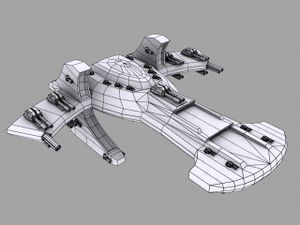Sahar Jusenkyou-Class Carrier
The Sahar Jusenkyou was the first successful hybrid carrier/battleship. Though numerous attempts had been made throughout previous Fleet Revisions, only the G-001 entered production.
Basic design and concept
The primary Instructor on the revision that produced the Sahar-class was Instructor Gailen, who conceived of a multi-role warship on a vast scale.
Using revolutionary hull geometry and what some would call 'a willingness to blaspheme against an angry God', he produced one of the most terrifying warships ever known until the G.S.S. Lina Rowen.
A Revolution in Concept
Gailen began by abandoning all previous design conventions and eliminating several features standard on GS warships for millenia. His new design was significantly larger than previous vessels and uncluded elements that allowed for the large battery guns standard on battleships to be included. The new hull design allowed the ship far more guns than usual, as well as fire along more vectors.
Possibly the most important feature of the Sahar-class was the use of bottom-mounted weapons systems and additional hangar decks. Typically, the lower-hull of Gudersnipe ships is convex and featureless, smoothed and processed in such a way as to form a single piece. These hulls are used in aero-braking manuvers and to land on water. In combat, they are also used as a literal "shield" by turning it towards the the greatest threats.
The Sahar was the first large production-model ship to abandon this concept, instead relying on stronger armor over-all and improved shield technology. This meant the ship would be unable to land under any circumstances; the hull geometry meant that if it survived atmosphere entry at all, the frame would never be able to support the full weight. Gailen explained the design choice by pointing out that 'landing' had long been considered an emergency procedure for capitol-class ships, and few had ever been salvaged. Even under perfect circumstances, a dreadnaught could never lift off again, only the much smaller cruisers could even hope to, and really no ship larger than a destroyer built in the last thousand years could carry out multiple take-offs and landings.
In a code-six scenario, he believed the ship could survive a landing in-tact enough for the crew to follow protocal
